Top image: “UNITED NATIONS - WE 1,750,000,000 PEOPLE FOR UNDERSTANDING FOR PEACE,” F. C. Veit, 1943-1945, National Archives and Records Administration, cataloged under the National Archives Identifier (NAID) 515906.
Between April 25, 1945 and June 26, 1945, delegates of 50 nations met in San Francisco, California, at the United Nations Conference on International Organization. Working off previous proposals outlined in the Atlantic Charter, the Dumbarton Oaks proposals, the Yalta Agreement, and amendments suggested by governments in attendance, the Conference agreed upon the Charter of the United Nations and the Statute of an International Court of Justice, which effectively created the United Nations (UN).
Various international organizations existed before the UN, yet many were limited in scope and power. In 1899, for example, the International Peace Conference was held in The Hague to create instruments for peacefully settling international crises, preventing wars, and codifying rules of warfare. The International Peace Conference also adopted the Convention for the Pacific Settlement of International Disputes and established the Permanent Court of Arbitration, which began work in 1902.
In 1919, representatives at the Paris Peace Conference founded the League of Nations under the Treaty of Versailles. Designed to keep the peace in the aftermath of World War I, the League—often seen as the predecessor to the United Nations—went into effect a year later. Compared to the United Nations, however, the League failed to secure or retain membership for certain major powers, had confusing procedures for negotiating disputes between states, and lacked sufficient powers to prevent or terminate hostilities. Even though the League of Nations failed to prevent World War II, the Allies learned from the failures of the League and, under the leadership of US President Franklin D. Roosevelt and British Prime Minister Winston Churchill, began planning a successor organization in the summer of 1941.
The League of Nations
The first international organization designed “to promote international cooperation and to achieve peace and security” was the League of Nations. Championed by US President Woodrow Wilson, the League was made up of sovereign states devoted to the settlement of disputes and the prevention of war. The organization’s main aim was to create a new process for conducting foreign affairs in order to abolish war and encourage disarmament in the wake of the destruction wrought by World War I.
The establishment of the League of Nations marked a significant turning point in international relations. In contrast to how intergovernmental affairs had previously been conducted, often through hidden agreements and fragile alliances, governments who joined the League agreed to sit at one table and find peaceful solutions to political problems and disputes. In January 1920, 42 nations had already joined the League of Nations.
The League of Nations achieved successes in international cooperation in its early years through conferences, intergovernmental committees, and meetings with experts in areas such as transport and communications, health, economic and financial affairs, and intellectual cooperation. The organization also peacefully resolved regional disputes between Sweden and Finland and between Greece and Bulgaria.
The League of Nations, however, was plagued with many problems. Although the organization had the power to offer arbitration through the Permanent Court of International Justice and apply trade sanctions against countries that went to war, all declarations and decisions had to be unanimous. This, coupled with the fact that the League had no military, limited the extent to which the League could stop foreign aggression or enforce any decisions it made.
Another major issue was that the institution failed to secure or retain the membership of certain major powers whose participation and cooperation were essential to make it an effective instrument for preserving the peace. Although Woodrow Wilson was an enthusiastic supporter of the League of Nations, the United States never officially joined the League due to opposition from isolationists in Congress. Moreover, after the League condemned Japan’s invasion of Manchuria in 1932 and Italy’s invasion of Abyssinia in 1935, both countries left the organization. Hitler also renounced Germany’s membership in 1933, leaving the rest of the League’s members powerless to stop German aggression in Austria and Czechoslovakia.
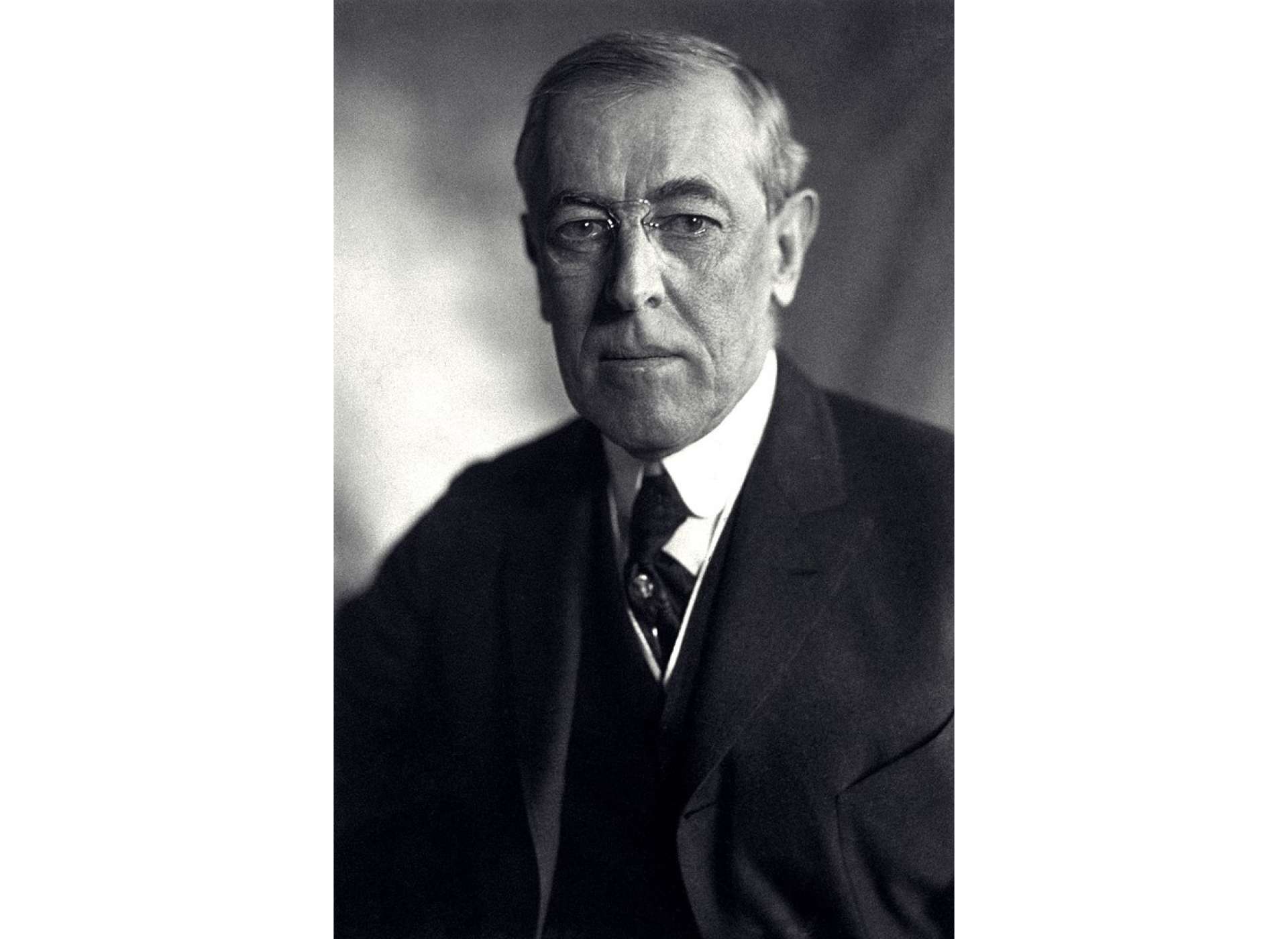
“Woodrow Wilson, President of the United States,” Harris & Ewing, 1919, United States Library of Congress's Prints and Photographs division, digital ID cph.3f06247.
Despite the League’s failure to prevent World War II, it did provide a blueprint for another international peacekeeping organization. As Stewart M. Patrick, a senior fellow in global governance, stated in an interview with Time Magazine:
“The League of Nations is significant because, even though it failed, it was the first time a bunch of sovereign nations got together and said, ‘We’re sovereign nations, but we’re going to try to combine our power to try to keep the peace.’ It also had some modest successes particularly dealing with certain territorial disputes. The League was not in vain if you consider that there were lessons learned from its failings.”
Preparations for a United Nations, 1942-1945
The outbreak of World War II in 1939 generated a desire among the Allied nations to create a new international body that would be more adequately equipped to maintain international peace in the future. The concept of international peace and security laid out in the UN Charter began to develop with the ideas expressed in the Declaration of St. James Palace and the Atlantic Charter of 1941, both of which expressed the need for global cooperation to ensure peace. Subsequent meetings with nations at war with Germany and Japan continued throughout the conflict at Moscow, Tehran, Dumbarton Oaks, and Yalta, culminating with the creation of the United Nations at the San Francisco Conference in April 1945.
On June 12, 1941, the representatives of Great Britain, Canada, Australia, New Zealand, the Union of South Africa, General de Gaulle of France, and the exiled governments of Belgium, Czechoslovakia, Greece, Luxembourg, the Netherlands, Norway, and Poland met at the historic St. James Palace. During the meeting they signed a declaration which stated, in part:
“The only true basis of enduring peace is the willing co-operation of free peoples in a world in which, relieved of the menace of aggression, all may enjoy economic and social security; and that it is their intention to work together, and with other free peoples, both in war and peace to this end.”
Two months later, on August 14, 1941, Roosevelt and Churchill issued a joint declaration, known as the Atlantic Charter, following a meeting of the two heads of government in Newfoundland. In addition to outlining US and British war aims, the charter also provided a vision for a postwar world order. It specifically assured that both countries shared “certain common principles in the national politics of their respective countries on which they base their hopes for a better future for the world.” This statement also included clauses pertaining to equal trade opportunities, free communications, economic and social cooperation, and collective security against aggression. The eighth paragraph of the document specifically referred to the future “establishment of a wider and permanent system of security.”
According to Philips Bradley, “the fact that the leaders of the United States and Great Britain subscribed to these principles jointly gave the Atlantic Charter an importance far beyond a simple personal declaration” since the United States affirmed its commitment to a “workable world security system,” when it was not yet at war.
On January 1, 1942, twenty-six countries, including the United States, Great Britain, China, and the Soviet Union agreed to the principles outlined in the Atlantic Charter in a document which became known as the Declaration of the United Nations or the Declaration by United Nations. The Declaration by United Nations contained the first official use of the term “United Nations,” a phrase coined by Franklin D. Roosevelt. Between 1942 and 1945, 21 other countries signed the document. As planning for the 1945 San Francisco Conference began, only states which had declared war on Germany and Japan prior to March 1945 and subscribed to the United Nations Declaration were invited to take part. Thus, the Declaration was a crucial step in securing global support for the founding of a new postwar international organization designed to promote peace.
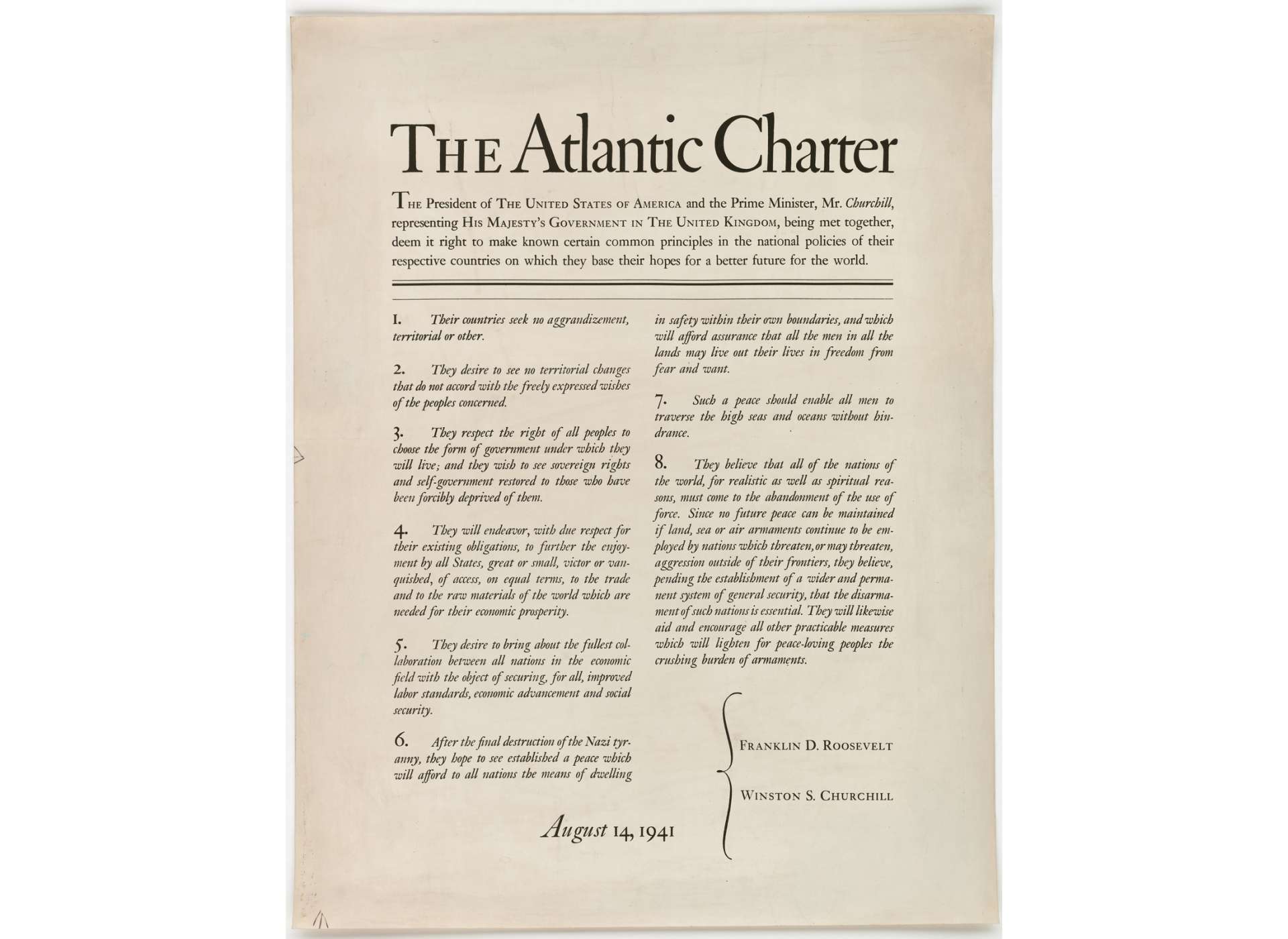
“The Atlantic Charter Poster,” 1942-1945, NARA & DVIDS Public Domain Archive. The Declaration of the United Nations, January 1, 1942, Washington DC, UN Photo/VH. The original 26 signatories included: The United States, the United Kingdom of Great Britain, Northern Ireland, the Soviet Union, China, Australia, Belgium Canada, Costa Rica, Cuba, Czechoslovakia, the Dominican Republic, El Salvador, Greece, Guatemala, Haiti, Honduras, India, Luxembourg, the Netherlands, New Zealand, Nicaragua, Norway Panama, Poland, the Union of South Africa, and Yugoslavia. Subsequent adherents to the declaration were Mexico, the Philippines, Ethiopia, Iraq, Brazil, Bolivia, Iran, Colombia, Liberia, France, Ecuador, Peru, Chile, Paraguay, Venezuela, Uruguay, Turkey, Egypt, Saudi Arabia, Syria, and Lebanon.
Negotiations on the future international organization continued at Moscow, Tehran, and Dumbarton Oaks in Washington, DC, between 1943 and 1944. At the close of the Moscow Conference, held in the fall of 1943, the foreign ministers of the United States, Russia, Great Britain, and China issued a statement recognizing:
“the necessity of establishing at the earliest practicable date a general international organization, based on the principle of sovereign equality of all peace-loving States, and open to membership by all such States, large and small for the maintenance of international peace and security.”
This was the first time the idea of establishing an international organization to keep peace after the end of World War II was explicitly expressed in an official document. Shortly thereafter, all four countries appointed national committees composed of experts that separately worked on drafting a charter for the future organization. Within a year, representatives of the United States, Great Britain, the Soviet Union, and China met at the Dumbarton Oaks estate in Washington, DC and issued the Dumbarton Oaks Declaration, a detailed blueprint which became the framework for the San Francisco Charter.
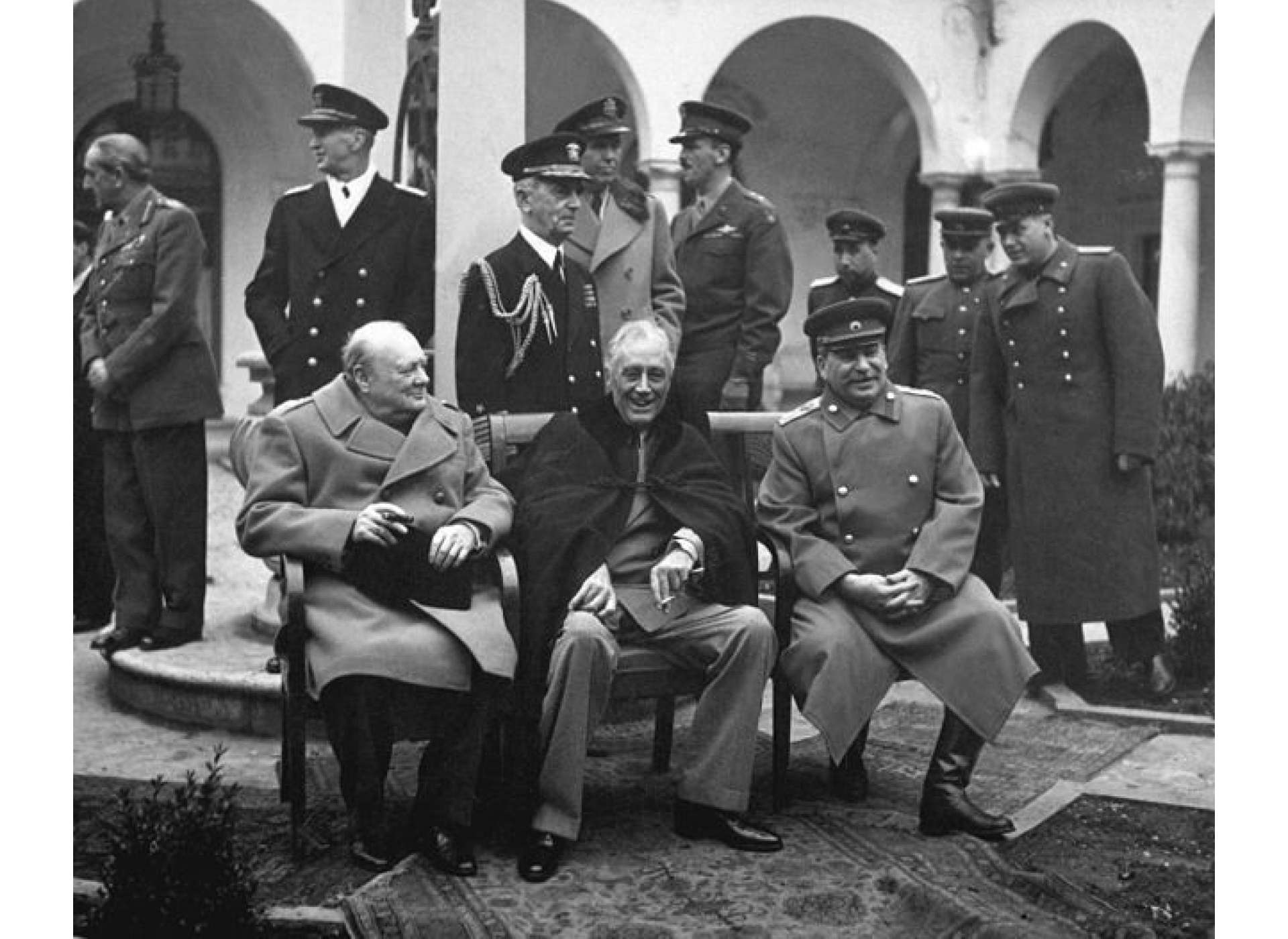
British Prime Minister Winston Churchill, U.S. President Franklin D. Roosevelt, and Soviet Premier Joseph Stalin pose outside on the grounds of the Livadia Palace during the Yalta Conference. “Yalta Conference, February 4, 1945, Yalta, Ukraine, United States Holocaust Memorial Museum, courtesy of National Archives and Records Administration, College Park, Photograph Number: 91461.
Negotiations concerning the future United Nations continued at the Yalta Conference in February 1945. On February 11, 1945, Roosevelt, Churchill, and Stalin, together with their foreign ministers and chiefs of staff, declared:
“We are resolved upon the earliest possible establishment with our Allies of a general international organization to maintain peace and security. We believe that this is essential, both to prevent aggression and to remove the political, economic, and social causes of war through the close and continuing collaboration of all peace-loving peoples.”
At Yalta, “the Big Three” also agreed that “a Conference of the United Nations should be called to meet at San Francisco in the United States on 25th April, 1945, to prepare the charter of such an organization,” proposed a Security Council for the future United Nations, and outlined voting procedures.
Invitations for the San Francisco Conference were sent out on March 5, 1945. With the death of President Roosevelt on April 12, 1945, there was fear that the conference might be postponed. President Truman, however, decided to carry out all the arrangements already put in place, and the conference opened two weeks later.
San Francisco Conference 1945
The goal of the San Francisco Conference, formally known as The United Nations Conference on International Organization, was to set the foundations and establish a framework for the United Nations. There were 850 delegates from 50 countries at the Conference—26 of which had signed the original 1942 Declaration of the United Nations. At the time of the conference, there was no internationally recognized Polish Government, therefore, despite being one of the original signatories of the Declaration of United Nations, Poland did not have a representative at the conference. The country was later admitted and allowed to be considered an original member, bringing the total number of founding member states to 51.
To accomplish the task of creating a founding charter for the United Nations, work at the San Francisco Conference was organized into four committees. The Conference in Plenary Session was the highest body, which was in charge of the final voting and adoption of the text of the Charter of the United Nations. Below, there were four main committees: The Steering Committee dealt with questions regarding policy and procedure; the Executive Committee prepared recommendations for the Steering Committee; the Coordination Committee assisted the Executive Committee, and the Credentials Committee verified the credentials of all delegates. The foreign ministers of the four Allied sponsors, US Secretary of State Edward Reilly Stettinius, Jr., Anthony Eden of Great Britain, Vyacheslav Mikhaylovich Molotov of the USSR, and T.V. Soong of China, took turns acting as chairman of the plenary meetings.
According to Bradley, one of the major issues facing delegates “arose out of the difficulty of reconciling the theory of international law-that all nations are equal- with the facts of international life- that some are more powerful and influential than others.” On the one hand, more powerful countries recognized that they would have more responsibility for supplying military forces for keeping the peace and wanted to have significant input about when, where, and how they would use their resources when called to do so. Closely related, was the prevalent belief among larger nations that they should have the right to veto the use of international forces against themselves. On the other hand, smaller nations insisted that they were sovereign equivalents to larger nations and should have an equal say in peacekeeping missions.
To solve this issue, The Charter of the United Nations created a General Assembly of all member states, each with one vote, which acts as “a world legislature without lawmaking power.” The Charter also created an executive organ called the Security Council, with five permanent and six non-permanent, rotating members. The five permanent members included China, France, the United States, the Soviet Union, and Great Britain—all of which have veto power. Today, the five original permanent members remain the same, but as the UN expanded the number of non-permanent members to ten.
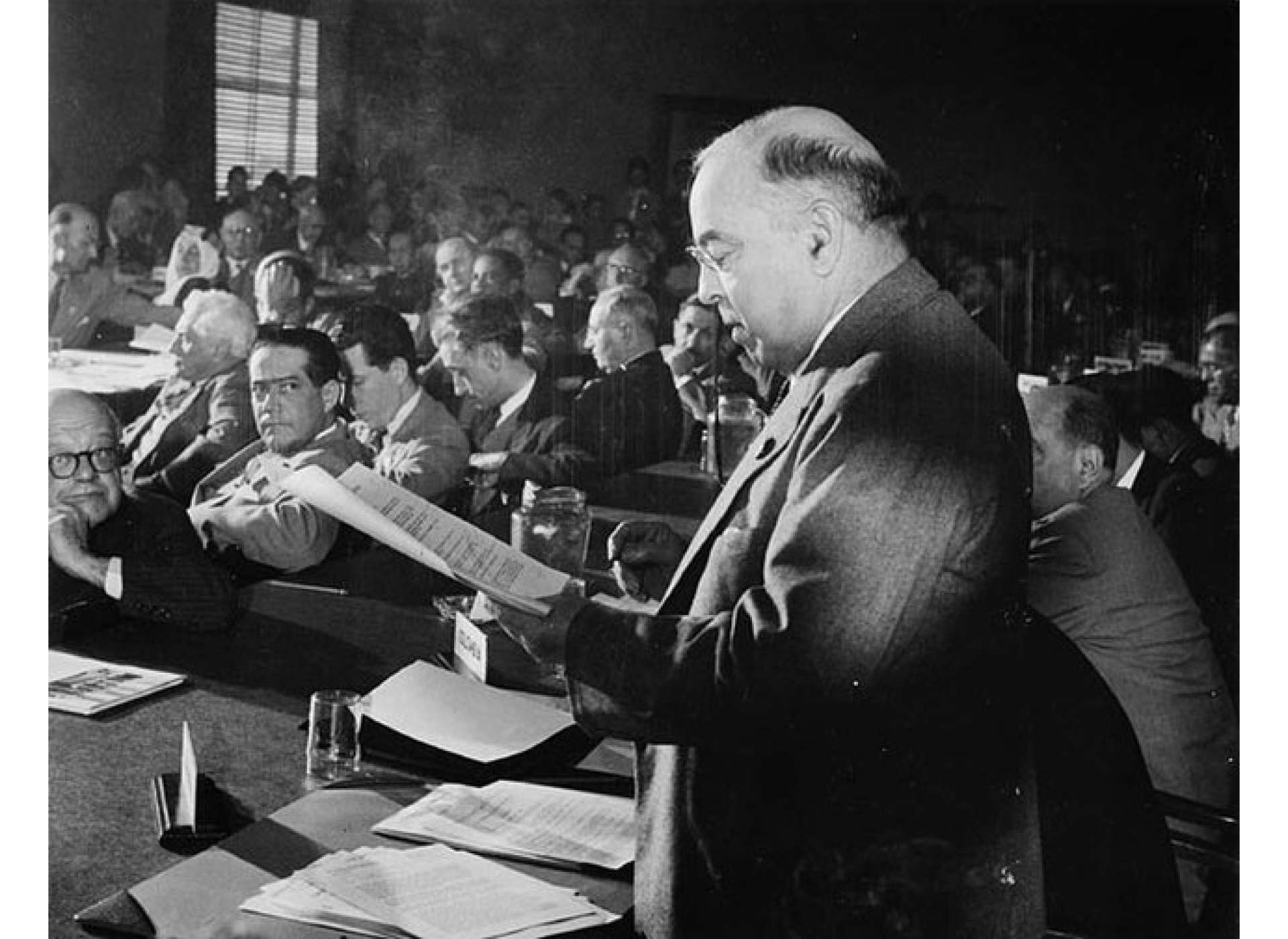
“Rt. Hon. W.L. Mackenzie King addressing the United Nations Conference on International Organization,” Nicholas Morant, 1945, Phototheque / Library and Archives Canada, C-022715.
The Security Council was designed to be the main body responsible for the maintenance of international peace and security and, under the Charter of the United Nations, all member states are obligated to comply with Security Council decisions. The Charter also established a Military Staff Committee attached to the Security Council, intended to direct the use of armed forces on behalf of the United Nations, a significant component missing from the League of Nations.
The other main governing body established at San Francisco was the International Court of Justice, which is responsible for settling, “in accordance with international law, legal disputes submitted to it by States and to give advisory opinions on legal questions referred to it by authorized United Nations organs and specialized agencies.”
Delegates to the San Francisco Conference also had to deal with other issues including how to incorporate regional and bilateral treaties into the new international organization and questions regarding what should be done with former enemy colonies and “dependent peoples,” who had been under the supervision of one of the victor nations. How member states would cooperate and compromise on economic and social matters also had to be addressed. To address these issues, the Charter created an 18-member Economic and Security Council, a Trusteeship Council to oversee colonial territories, and a Secretariat under a Secretary General.
At the end of the San Francisco Conference, on June 25, 1945, the Charter was unanimously adopted at the San Francisco Opera House. The next day, it was signed at the Herbst Theater auditorium of the Veterans War Memorial. The United Nations, however, did not come into existence until October 24, 1945 (now annually observed as United Nations Day), when the governments of China, France, Great Britain, the Soviet Union, and the United States and a majority of the other signatory states had ratified the Charter.
After four years of planning, the United Nations materialized, marking a momentous step in development of peaceful international relations. This “great alliance,” in Roosevelt’s words, would guarantee “a true peace based on the freedom of man.” Utilizing the effective aspects of the League of Nations and adapting the features that did not work, the Allied nations successfully established a lasting organization to promote peace, justice, and better living for all humanity.
Jennifer Popowycz, PhD
Jennifer Popowycz, PhD is the Leventhal Research Fellow at The National WWII Museum. Her research focuses on the Eastern Front and Nazi occupation policies in Eastern Europe in World War II.
Cite this article:
MLA Citation:
APA Citation:
Chicago Style Citation:
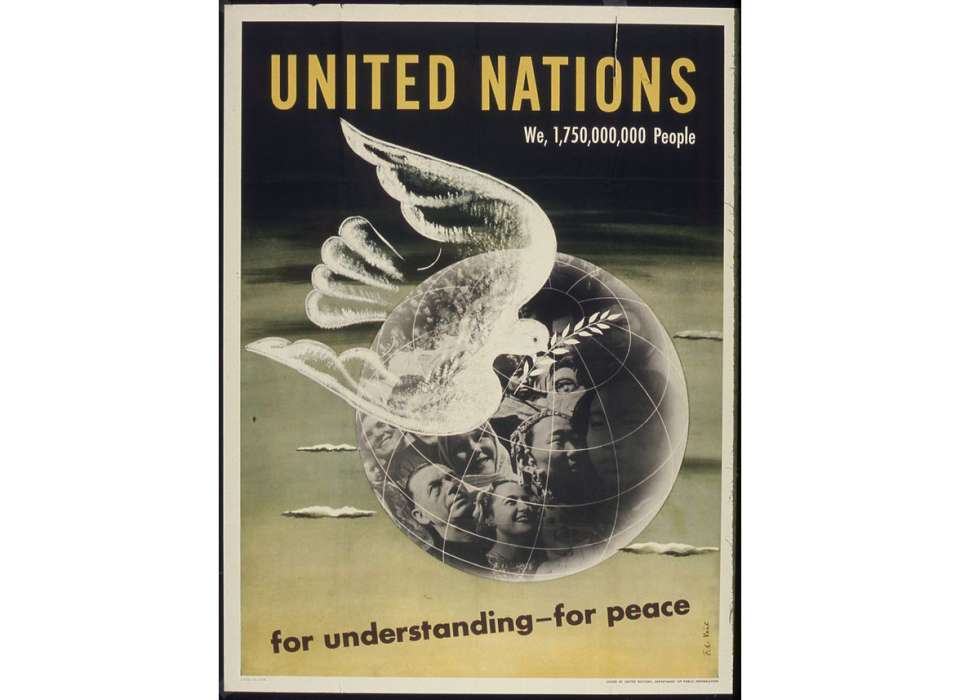
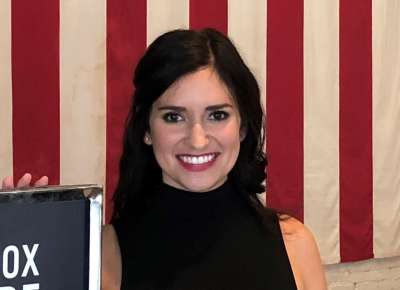



![Max Fuchs, New York City cantor, sings as Rabbi Sydney [sic] Lefkowitz, Richmond, VA, conducts the first Jewish services from Germany.](/sites/default/files/styles/max_650x650/public/2025-10/image1.jpg)



